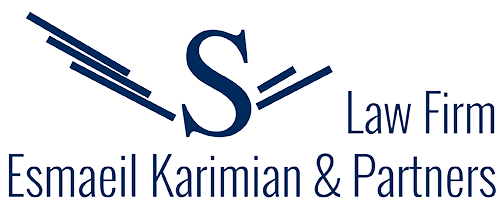In this article you will read:
Source of Project Finance
1. Introduction
Project financing is one of the most important milestones of investment projects. For example, in BOT arrangements, financing and investment of the projects, including the payment of all costs of design, engineering, procurement, transportation of equipment to the project site, construction, installation, testing, commissioning, operation, maintenance, repair, management and insurance of the project, in addition to paying legal costs such as taxes and duties, is the responsibility of the private sector, and the project company is committed to provide the necessary financial resources to cover these costs during the contract period.
Financing investment projects such as BOT covers a variety of topics including source of finance, equity to debt ratios, project financial engineering, and the project financing mechanism.
Depending on the financial structure of a project and the financial instruments available, a variety of resources may be used to finance a project at different stages of its implementation; These resources are legally divided into three types, including equity, loans, and a combination of the two (Mezzanine Financing).
The use of each of these resources and how they are combined depends on nature and structure envisaged for project financing.
You might also be interested in :
2. Equity
In a conventional investment project such as BOT, a part of funding comes from the investment of the project sponsors or the project company’s shareholders; the contribution or investment of the founders is one of the preconditions for granting the exclusive concession of project implementation by the public sector while it facilitates the process of financing through commercial loans.
The major shareholders of the project company are the project sponsors who are the EPC contractor, operators, buyers of products, and other persons who are related to the company.
The amount of equity finance is usually less than other sources of financing such as loan; because the repayment of investors dividends in the project company always takes place after settling the amounts due to other creditors such as lenders.

The lenders normally limit the amount and time schedule of repayment of shareholders’ dividends to ensure that they receive the principal and interest of their loan from the project revenue. Therefore, if the project fails, investors will incur more financial risks than other financiers, and obviously, in order covering these risks, they demand a higher rate of return on investment than lenders.
In addition to risks of repayment as mentioned above, another concern of investors is the project assets and their ultimate owner. In BOT projects, at the transfer phase and after the end of the contract period, the property and assets of the project company must be transferred to the public sector and investors have no right to these assets in proportion to their shares.
Therefore, the investors try to design the financial structure of the project in such a way that, first, their rate of return is commensurate with the risks they have already incurred, and second, the concession period is predicted in such a way that their desired rate of return is achieved.

3. Loan
A large part of the financial resources required for the project is obtained through loans taken from banks and financial institutions. Borrowing is usually done under a “long-term loan agreement” that has a maturity of more than one year.
On average, today more than 50% of project financing is provided by borrowing from commercial banks and institutions, and repayment of principal and interest of loans from project revenues takes precedence over other project debts such as secondary loans and shareholder dividends.
In large projects that require a lot of financial resources, naturally, a single bank would not be able to provide these resources and inject them into the project; therefore, a consortium of banks, under a single loan agreement, will provide facilities to the project company.
Due to the multiplicity of lenders, this method of borrowing is called a “syndicated loan”. A syndicated loan is offered by a group of lenders who work together to provide credit to a large borrower. In order to organize this group of lenders, one of these banks is responsible for organizing other banks.
In this way, after forming a consortium and concluding a contract, one of the banks will be responsible for managing the consortium on behalf of the others.
Each of these banks, in accordance with the terms of the loan agreement, will be responsible for securing its share of the loan amount and the right to receive principal and interest on the amounts paid.

4. Bond Finance
In some cases, the project company may provide a part of the project funding by issuing bonds. The issuance of bonds is not different in nature from borrowing from banks and financial institutions, and the issuer of these bonds is obliged to pay the principal amount of the bonds and the related interest to the buyers within a specified period of time; However, unlike loan agreement, in which banks are parties to a contract with a project company, the issuer of the bonds offers the bonds at a fixed interest rate in the financial market.
5. Subordinated Loan
Subordinated Loan, also known as “Mezzanine Financing”, is one of the sources of project financing. A subordinated loan requires payment of interest after senior debt services such as syndicated loan or bond finance, but before dividends.
The basis for creating such a tool for project financing can be summarized as follows:

- When the financial resources injected into the project are not sufficient to cover additional costs such as the costs of the completion phase and new financial resources is needed, in this case, from the lenders and investors’ point of view, the subordinated loan is considered as equity finance. However, to maintain equity to debt ratios, it will be considered as a debt in the project account.
- In some cases, in the articles of association of a company or an institution, any investment is prohibited or the strategic plan of the financial institution is based on lending. In such cases, one solution is to invest in projects in a form of subordinated loan;
- Finally, some investors may seek to limit their responsibilities (for example, reducing tax liabilities) that result from equity finance; In this case, financing the project through the subordinated loan mechanism is a way forward too; Since the repayment of such loans is later than the senior debt and lenders bear more risk, the interest rate of these loans is higher than the senior debt.
Our team is composed of highly skilled and versatile lawyers who combine practical experience and academic knowledge of their field. Most of our practitioners have worked in different professional environments, often outside their home jurisdiction.





No comment